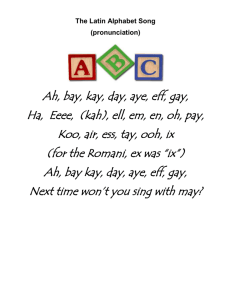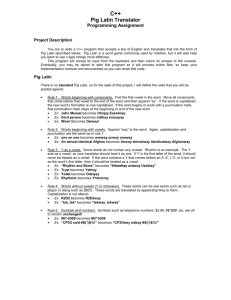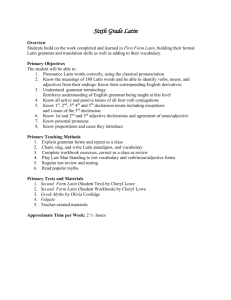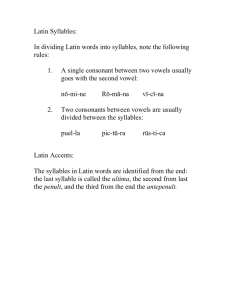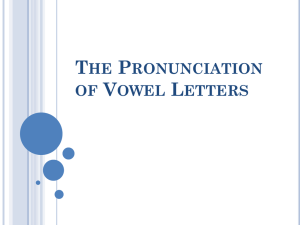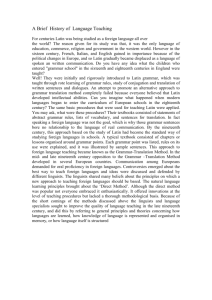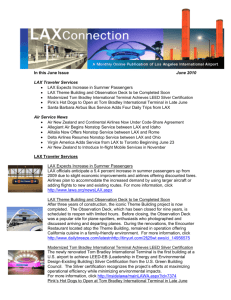Early Modern English
advertisement
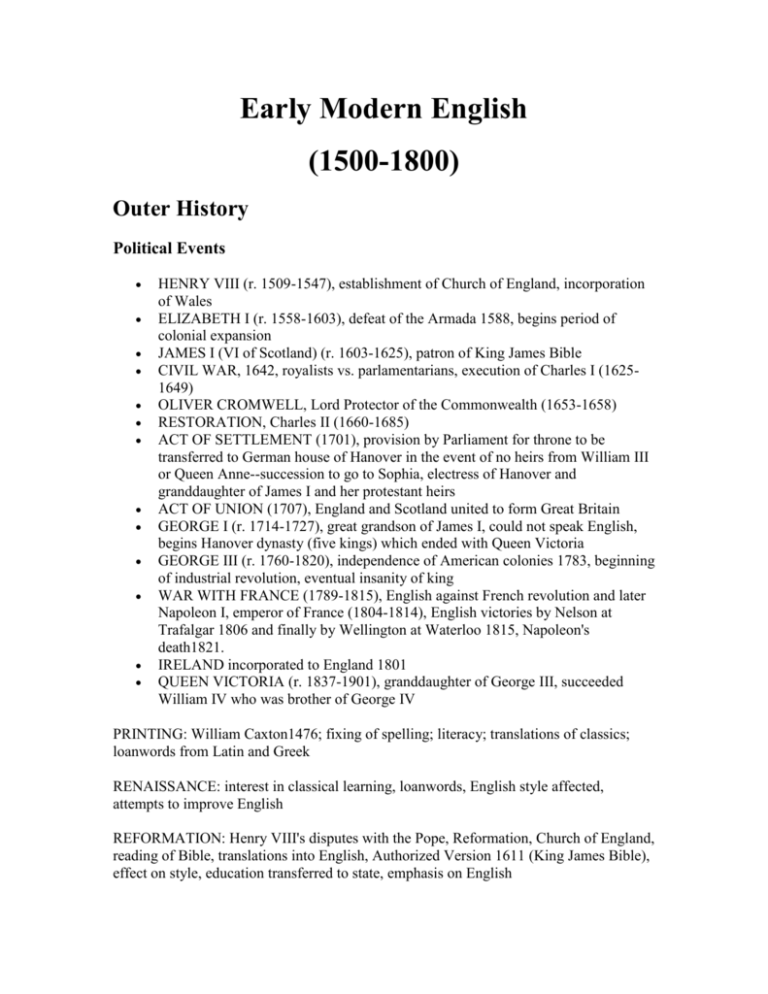
Early Modern English
(1500-1800)
Outer History
Political Events
HENRY VIII (r. 1509-1547), establishment of Church of England, incorporation
of Wales
ELIZABETH I (r. 1558-1603), defeat of the Armada 1588, begins period of
colonial expansion
JAMES I (VI of Scotland) (r. 1603-1625), patron of King James Bible
CIVIL WAR, 1642, royalists vs. parlamentarians, execution of Charles I (16251649)
OLIVER CROMWELL, Lord Protector of the Commonwealth (1653-1658)
RESTORATION, Charles II (1660-1685)
ACT OF SETTLEMENT (1701), provision by Parliament for throne to be
transferred to German house of Hanover in the event of no heirs from William III
or Queen Anne--succession to go to Sophia, electress of Hanover and
granddaughter of James I and her protestant heirs
ACT OF UNION (1707), England and Scotland united to form Great Britain
GEORGE I (r. 1714-1727), great grandson of James I, could not speak English,
begins Hanover dynasty (five kings) which ended with Queen Victoria
GEORGE III (r. 1760-1820), independence of American colonies 1783, beginning
of industrial revolution, eventual insanity of king
WAR WITH FRANCE (1789-1815), English against French revolution and later
Napoleon I, emperor of France (1804-1814), English victories by Nelson at
Trafalgar 1806 and finally by Wellington at Waterloo 1815, Napoleon's
death1821.
IRELAND incorporated to England 1801
QUEEN VICTORIA (r. 1837-1901), granddaughter of George III, succeeded
William IV who was brother of George IV
PRINTING: William Caxton1476; fixing of spelling; literacy; translations of classics;
loanwords from Latin and Greek
RENAISSANCE: interest in classical learning, loanwords, English style affected,
attempts to improve English
REFORMATION: Henry VIII's disputes with the Pope, Reformation, Church of England,
reading of Bible, translations into English, Authorized Version 1611 (King James Bible),
effect on style, education transferred to state, emphasis on English
ECONOMY: wool production, large sheep pastures, migration to cities, urbanization,
dialectal mixing, rise of middle class, upward mobility, quest for correct usage,
authoritarian handbooks; Industrial Revolution: more intensive urbanization, technical
vocabulary based on Latin and Greek roots, decreased literacy due to child labor
EXPLORATION AND COLONIZATION: defeat of Spanish Armada 1588, control of
seas, acquisition of colonies throughout the world (Bermuda, Jamaica, Bahamas,
Honduras, Canada, American colonies, India, Gambia, Gold Coast, Australia, New
Zealand); exotic products, loanwords from non-Indo-European languages, spread of
English around the world
AMERICAN REVOLUTION: separation of English speakers, beginning of multiple
national Englishes
SCHOLARLY WRITING: 17th c. scholarly writing still mostly in Latin, Newton, Bacon;
middle class embraced English as scholarly language during18th c.
LINGUISTIC ANXIETY: perceived lexicon inadequacies, borrowing from Latin,
deliberate attempts to improve the language: Sir Thomas Elyot, definition of neologisms;
critics of such borrowings termed them inkhorn terms, Thomas Wilson, Roger Ascham,
Sir John Cheke (translated New Testament using only English words); attempt to
preserve purity of English, reviving of older English words; archaizers, Edmund Spenser
(1552-1599); compounding of English words: Arthur Golding (1587); attempts to
produce English technical vocabulary: threlike (equilateral triangle), likejamme
(parallelogram), endsay (conclusion), saywhat (definition), dry mock (irony)
LOANWORDS: Greek and Latin technical vocabulary; continued borrowing from
French (comrade, duel, ticket, volunteer), also Spanish (armada, bravado, desperado,
peccadillo), Italian (cameo, cupola, piazza, portico)
SPELLING REFORM: John Cheke (1569): proposal for remove all silent letters; Sir
Thomas Smith (1568): letters as pictures of speech, elimination of c and q, reintroduction
of thorn, use of theta, vowel length marked with diacritics; similar proposals by John Hart
(1569-70), elimination of y, w, c, capital letters; William Bullokar (1580): diacritics and
new symbols, dictionary and grammar to set standards; public spelling standardized by
mid 1700's, under influence of printers, scribes of Chancery
DICTIONARIES: desire to refine, standardize, and fix the language
William Caxton, French-English vocabulary for travelers (1480)
Roger Williams's Key into the Languages of America (1643)
Richard Mulcaster's treatise on education,The Elementarie (1582), 8000 English
words but no definitions
first English dictionary, Robert Cawdrey's A Table Alphabeticall (1604), 2500
rare and borrowed words, intended for literate women who knew no Latin or
French, need to read Bible, concern with correctness
John Bullokar's An English Expositor (1616), marked archaic words
Henry Cockeram's English Dictionarie (1623), including sections on refined and
vulgar words and mythology
Thomas Blount's Glossographia (1656), 11000 entries, cited sources and
etymologies
John Kersey's A New English Dictionary (1702), first to include everyday words
Nathaniel Bailey's An Universal Etymological English Dictionary (1721) and
Dictionarium Britannicum (1730), 48000 entries, first modern lexicographer,
ordinary words, etymologies, cognate forms, stress placement
Samuel Johnson's A Dictionary of the English Language (1755), 40,000 entries,
illustrative quotations, model for OED
ENGLISH ACADEMY MOVEMENT: 17th-18th c., language sentinel, regulate excesses
of the Renaissance, precedents in Académie Française (1635); proponents: scientist and
philosopher Robert Hooke(1660), curator of experiments of Royal Society; Daniel Defoe
(1697); Joseph Addison (1711); Jonathan Swift (1712), Queen Anne supported idea but
died in 1714 and her successor George I was not interested in English; opposition from
liberal Whigs who saw it as Tory scheme; Johnson's dictionary substituted for academy;
John Adams's proposal for American Academy
GRAMMAR: attention given to proper and improper usage after mid 18th c.; aspiring
middle classes, desire to acquire appropriate linguistic behavior; Age of Reason, logic,
organization, classification; attempts to define and regulate grammar of language; notion
of language as divine in origin, search for universal grammar, Latin and Greek
considered less deteriorated, inflection identified with grammar; William Jones's IndoEuropean hypothesis, end of 18th c.; 18th c. grammarians: attempts to provide rules and
prevent further decay of language, to ascertain, to refine, to fix
Thomas Wilson's The Arte of Rhetorique (1553) based on classical models
Henry Peacham's The Garden of Eloquence (1577), dictionary of rhetorical tropes
William Bullokar's Bref Grammar (1586)
Alexander Gil's Logonomia Anglica (1621), very tied to Latin
Jeremiah Wharton's The English Grammar (1654), accepted lack of inflections
Robert Lowth's A Short Introduction to English Grammar (1762), most prominent
of 18th c. grammars, authoritarian tone
Joseph Priestly's The Rudiments of English Grammar (1761), more liberal attitude
Noah Webster's Plain and Comprehensive Grammar (1784), American grammar,
based on usage but concerned with misuse by Irish and Scots immigrants
Lowth and Priestly: grammar as art, issue of propriety, effects of analogy; 18th c.
grammarians: usage as moral issue, attempt to exterminate inconvenient facts
PHONOLOGY
Fossilization of spelling, difficulty ascertaining phonology, help from written statements
about the language; dialectal variations
Consonants
addition of phonemic velar nasal [ng, as in 'hu/ng/'] and voiced alveopalatal fricative [z,
as in 'mea/s/ure']
disappearance of allophones of /h/ after vowel; disappeared before t: sight, caught,
straight; disappeared or became f in final position: sigh, tough
loss of l after low back vowel and before labial or velar consonant: half, palm, talk
loss of t/d in consonant clusters with s: castle, hasten
loss of ME instrusive t after s: listen, hustle
g/k lost in initial position before n: gnaw, gnome, know, knight
w lost in initial position before r: wrong, wrinkle, wrist
g lost in ng in final position, producing the phonemic velar nasal; in some dialects further
simplification occurred so that the velar nasal became n, alternate spellings:
tacklin/tackling, shilin/shilling
general loss of r before consonants or in final position; also regular loss of r in unstressed
positions or after back vowels in stressed positions: quarter, brother, March
development of palatal semivowel /j/ in medial positions (after the major stress and
before unstressed vowel: tenner/tenure, pecular/peculiar; when semivowel j followed s, z,
t, d, the sounds merged to produce a palatal fricative or affricate: pressure, seizure,
creature, soldier (this phenomenon is known as assibilation and is the origin of voiced
alveopalatal fricative /z/); dialectal exceptions and reversals: graduate, immediately,
Injun/Indian
d > / th/ after major stress and before r: OE faeder> father; th > d after r or before l: OE
morthor>murder
Spelling pronunciations:
French loans spelling /t/ as th led to /th/pronunciation in English: anthem, throne,
author, Anthony, Thames
French and Latin words with unpronounced initial h led to English words with
pronounced initial h: habit, hectic, history, horror (exceptions: hour, honor)
(compare heir/heritage)
influence of Latin roots led to introduction of l into loans from French without l:
Latin fallita, OF faute, EMnE fault; other consonants also introduced in
pronunciation in the same manner a/d/venture, perfe/c/t, bapti/s/m (ME aventure,
perfit, bapteme); some exceptions featuring resistance to the pronunciation of the
unhistorical p or b: receipt, debt, doubt (Latin receptus, debitus, dubitare)
Vowels
Long Vowels
Great Vowel Shift (GVS): major changes in ME long vowels, loss of vowel length; long
vowels came to be pronounced in higher positions, the highest were diphthongized. GVS
example: ME bite > PDE bite
exceptions to GVS:
long E> E: threat, head, death, deaf (instead of following normal GVS
development and becoming i: cheat, plead, wreath); this might be explainable by a
possible shortening of long E to E before GVS)
in other words long E became e but did not continue on to i: break, steak, great
in some words the normal u (boot, loose, mood) resulting from GVS went on to
become the shorter and lower U (foot, good, hook); in some cases U became a
schwa (flood, blood)
Short Vowels
further loss of final unstressed -e (exceptions: judges, passes, wanted)
in general a became æ; but then æ > a before r: harm, scarf, hard; also æ > a before
voiceless fricatives: staff, class, path; original /a/ remained however when the fricative
was followed by another vowel: classical, passage
a before l became lax o: all, fall, walk; also after w: want, wash, reward; but not if the
vowel preceded a velar consonant: wax, wag, quack
U> schwa: run, mud, gull, cut, hum, cup; but not if preceded by labial and followed by l,
or palatal s, or palatal c: full, pull, push, bush, butcher
lax i (I) and E stable but often confused with each other as attested by alternate spellings:
rever/river, derect/direct, niver/never
E followed by nasal became I: wenge>wing, sengle>single
lax o before l became o (bolt, cold, old, bowl) but was retained in other environments;
notice British dialectal variant: lax o > a: hot, rock, pocket
Influence of following R:
r tended to lower vowels (lax e + r>ar) when following them, fer>far, sterre>star,
derk>dark, ferme>farm; often however pronunciation reverted to higher positions:
sarvant>servant, sarmon>sermon; consider doublets: clerk/Clark, person/parson,
university/varsity; sergeant (pronounced /ar/)
lax i, lax e, lax u before r were lowered and centered to schwa: girl, dirty, her,
fern, early
following r blocked GVS so that long lax e, long o and long u did not become the
expected i, u, and au. e.g.: wear, bear, floor, sword, course, court
Diphthongs
tendency for diphthongs to smooth into simple vowels; also tendency for new
dipththongs to come into being
iu and lax e + u > iu>ju (pure, mute, hew, cute) and sometimes (after non-labials) ju>u
(new, glue, rude)
au>lax o (cause, hawk, claw); but before l+labial au> a or æ: half, calf, calm, palm
(notice also the loss of l in these examples)
lax o + u> o (know, blow, soul, grow) (notice how o is actually also a diphthong)
æi > e (day, pay, raise, stake, eight) (notice how e is also a diphthong)
ui and lax o + i> laxoi (toil, joy)
Prosody
rising pitch in questions; falling pitch in statements; tendency to stress on first syllable;
but actually quite a bit of variation in placement of major stress in polysyllabic words
often secondary stresses in syllables which today have only reduced stress
variant pronunciations were common
extensive use of contractions. EMnE preferred proclitic contractions ('tis), while PDE
prefers enclitic contractions (it's)
Graphics
abandonment of yogh; thorn became indistinguishable from y; i and j (Iohn) and u and v
used interchangeably, v at beginning of words, u elsewhere; use of long s, except at end
of word (s)
spelling fixed in printed words by end of 17th c.
respellings under Latin influence
common nouns often capitalized
comma replaced the virgule (/)
apostrophe used in contractions
heavier 18th c-punctuation than in PDE

